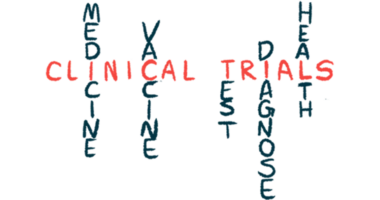Low Risk of Developing Inhibitors Found for Nuwiq Patients

Treatment with Octapharma‘s Nuwiq is associated with a low risk of developing inhibitors — antibodies that prevent the medication from working properly — in previously untreated patients (PUPs) with hemophilia A, according to the results of a clinical trial.
These findings were published in the journal Thrombosis and Haemostasis, in a study titled “Simoctocog Alfa (Nuwiq) in Previously Untreated Patients with Severe Haemophilia A: Final Results of the NuProtect Study.”
Hemophilia A is caused by a functional lack of the blood-clotting protein factor VIII, known as FVIII. Currently, one standard type of treatment is replacement therapy. As the name suggests, this involves the therapeutic administration of FVIII to “replace” the missing or defective protein.
A common problem with these types of therapies, however, is that some patients will develop inhibitors, or antibodies that bind to the medication, preventing it from working correctly. The risk of inhibitors is highest when individuals are starting on the treatment.
Nuwiq is a replacement therapy that is widely approved to treat hemophilia A, both as an on-demand and prophylactic (preventative) treatment. Made using a human cell line, Nuwiq does not have any biochemical modifications. Such modifications are frequently used to improve the stability of replacement therapies, allowing for less frequent dosing; however, they also can trigger an immune response that prompts the development of inhibitors.
“Nuwiq was developed … with the aim of minimising inhibitor risk in PUPs,” Larisa Belyanskaya, head of IBU Haematology at Octapharma, said in a press release.
In the new study, researchers from Octapharma and other institutions reported the results from the Phase 3 clinical trial NuProtect (NCT01712438). This Octapharma-sponsored trial was conducted at 38 sites in 17 countries.
A total of 105 PUPs given Nuwiq in the trial were evaluated for the presence of inhibitors. According to the researchers, this high number of participants made NuProtect “the largest prospective study in true PUPs with a single FVIII product.”
Having “true PUPs” — meaning patients without prior treatment with FVIII or other blood products — was a strength of the study, they said.
All participants were male, and about three-quarters were ages 2 or younger. The median age of the trial participants at first dosing was 12 months (age 1).
Among the boys analyzed, 28 (26.7%) developed inhibitors. Of these, 17 had high levels of inhibitors, and 11 had low inhibitor levels. In five of the 11 participants who developed low inhibitor levels, the levels decreased to being undetectable without modifications to the treatment regimen.
These rates of inhibitor development were generally lower than what has been seen for other FVIII products tested in PUPs in clinical trials. Generally, other studies have found an overall rate of inhibitor development of up to 40%, and a rate of high-level inhibitors of 25% or more.
For example, in the SIPPET study (NCT01064284), which evaluated FVIII products derived from hamster cell lines, 44.5% of participants developed any inhibitors, and 28.4% developed high levels of inhibitors.
“The study demonstrates that PUPs with severe haemophilia A treated with [Nuwiq] had a lower rate of high-titre [high-level] inhibitor development than that reported for [FVIII] products in other recent clinical trials,” the researchers concluded.
Ri Liesner, MD, coordinating investigator of the NuProtect study and a clinician at Great Ormond Street Hospital for Children in London, said the findings suggest that pediatric specialists should consider treating their youngest patients with Nuwiq.
“These data indicate Nuwiq may be an attractive option for people newly diagnosed with severe haemophilia A, who are young children and represent a vulnerable patient subset,” Liesner said.
All participants who developed inhibitors had null mutations in the gene that encodes FVIII — this means that their bodies do not produce FVIII at all.
Inhibitors were significantly more common in participants who were age 1 or younger, compared with older patients. Treatment-related factors (for example, surgeries) were not associated with a significantly altered risk of inhibitors.
A limitation of the NuProtect study is that almost all of the participants were white (82.4%) or Asian (13%). There were no Black participants, who have been reported to be at a generally higher risk of developing inhibitors.
“We know that haemophilia A patients face a lifetime of treatment decisions,” said Olaf Walter, a board member at Octapharma. “These data highlight the potential of Nuwiq to reassure PUPs and their families as they start their treatment.”






